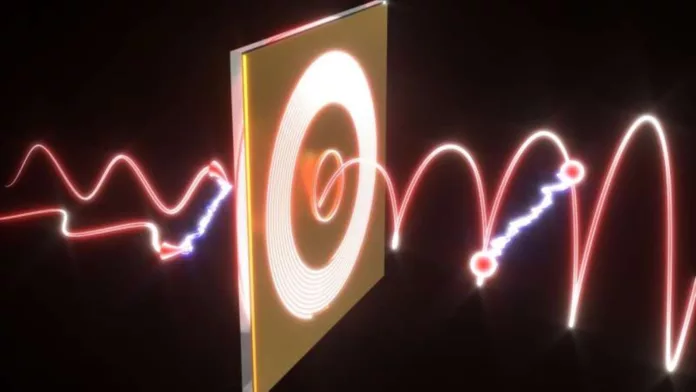
By Amit Malewar 11 Apr, 2025
Collected at: https://www.techexplorist.com/new-type-quantum-entanglement/98922/
In an exciting breakthrough, researchers at Technion have uncovered a novel form of quantum entanglement in photons confined to nanoscale structures—a leap forward with the potential to revolutionize quantum communication and computing. Their discovery delves into the mysterious world where light particles are no longer just “photons” but become entangled in their total angular momentum, revealing properties never seen before.
Quantum entanglement—a phenomenon Albert Einstein skeptically called “spooky action at a distance”—describes the strange ability of one particle to influence another, even across vast distances, instantly. Originally dismissed as science fiction, this concept laid the foundation for modern quantum communication, thanks to pioneering work by Prof. Asher Peres and collaborators at Technion decades ago. Their efforts gave rise to quantum teleportation, a hidden means of transmitting information across space.
For years, scientists have explored how photons could be entangled through properties like direction of travel, color, or electric field orientation. But the Technion team, led by Ph.D. student Amit Kam and Dr. Shai Tsesses, has gone deeper into the total angular momentum of photons, a property shaped by their spin and orbital motion. Imagine Earth rotating on its axis while orbiting the Sun—a relatable analogy for how photons interact.
The secret to this discovery? Nanoscale structures smaller than the wavelength of light, a field known as nanophotonics. As photons squeeze into these ultratight spaces—mere thousandths of the width of a human hair—their rotational properties merge into a single entity: total angular momentum. This unified behavior defies the conventional separation of spin and orbit in larger dimensions.
Why confine photons to such tiny spaces? It’s not just about miniaturizing technology; shrinking devices brings efficiency similar to electronic circuits. More importantly, this scale amplifies interactions between photons and nearby materials, unlocking phenomena impossible in larger systems.
This new study meticulously mapped photon states in these nanoscale systems. The researchers demonstrated quantum entanglement through angular momentum—linking photon pairs in a groundbreaking way—and enriched the potential states photons can occupy. It marks the first discovery of a new type of quantum entanglement in over twenty years.
“This opens doors to designing smaller, more powerful components for quantum communication and computing,” Kam explains. The discovery also lays the foundation for innovative, energy-efficient technologies that align with global sustainability goals.
With its promise of significant miniaturization and transformative applications, this research positions Technion at the forefront of quantum science. It offers glimpses into the future of light-based technologies that once seemed impossible. It’s a revolution waiting to unfold.
Journal Reference:
- Amit Kam et al., Near-field photon entanglement in total angular momentum, Nature (2025). DOI: 10.1038/s41586-025-08761-1

Leave a Reply